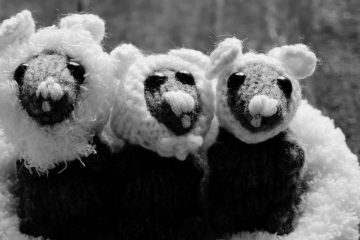What Happened On October 24th?
On October 24, 1926, Harry Houdini gave what would be his final performance at the Garrick Theatre in Detroit, despite suffering from a ruptured appendix. Days earlier, in Montreal, a university student named J. Gordon Whitehead had punched Houdini several times in the abdomen after asking to test his renowned physical strength. Houdini hadn’t braced for the blows, which led to severe internal damage. Despite this, Houdini, known for his resilience, ignored the pain and continued with his scheduled performances.
Houdini pushed forward, refusing to cancel his shows, even as his condition worsened. By the time he arrived in Detroit, his health had drastically declined. He was feverish, weak, and struggling to keep himself upright, but his determination to perform remained unshaken. That night, he completed his famous escape routines—slipping out of handcuffs, escaping a straitjacket, and freeing himself from a sealed water tank—all without revealing his suffering to the audience. The crowd, unaware of Houdini’s serious condition, applauded his usual brilliance. After the performance, Houdini collapsed. The untreated appendix led to a severe infection, and Houdini passed away on October 31, 1926.
Born Ehrich Weiss in Budapest in 1874, Houdini had always been drawn to physical feats and magic. His family moved to Appleton, Wisconsin, when he was young, and he quickly became fascinated with testing his body’s limits. By age nine, he performed as a trapeze artist, earning the nickname “Ehrie the Prince of the Air.” This early passion for pushing himself physically would later drive his legendary career as the world’s greatest escape artist.
Houdini adopted his stage name in honor of the French magician Jean-Eugène Robert-Houdin. However, by 1908, Houdini had distanced himself from his early idol and even wrote The Unmasking of Robert-Houdin, accusing Robert-Houdin of taking credit for others’ tricks. Houdini took pride in his originality and fiercely guarded the secrets behind his stunts.
Houdini’s career took off in 1899 when vaudeville manager Martin Beck recognized his unique talent and booked him for a national tour. Houdini’s escape acts gained widespread fame, particularly in Europe, where local police challenged him to escape from their strongest handcuffs and jails. One of his most famous escapes took place in 1904, when he freed himself from Scotland Yard’s specially designed handcuffs. Rumors suggested that Houdini had bribed a locksmith to learn the handcuff’s mechanism beforehand, though this was never confirmed. Nevertheless, Houdini’s escapes continued to astound audiences.
In 1912, Houdini debuted one of his most dangerous stunts, the Chinese Water Torture Cell. For this act, he was suspended upside down in a water-filled glass tank, shackled by his feet, and had to escape before drowning. Houdini rigorously trained to perform such acts, teaching himself to hold his breath for several minutes and to dislocate his shoulders in order to free himself from restraints. The physical toll was immense, and Houdini frequently suffered injuries, but he never revealed the extent of his pain to the public.
Outside of his stage career, Houdini became a fierce opponent of fraudulent spiritualists. After his mother’s death in 1913, Houdini began attending séances, hoping to communicate with her spirit. Instead, he uncovered widespread trickery used by mediums to fool grieving families. Furious at the exploitation of vulnerable people, Houdini devoted himself to exposing these frauds. He infiltrated séances in disguise, recorded the methods used by the mediums, and later recreated these tricks in public demonstrations to reveal how the spiritualists deceived their audiences.
Houdini’s commitment to unmasking fraud grew so intense that it ultimately caused a rift with his friend, Sir Arthur Conan Doyle, who was a staunch believer in the supernatural. Doyle insisted that Houdini had supernatural powers that he refused to admit, while Houdini steadfastly denied any such abilities. Their friendship eventually dissolved as Houdini continued to publicly challenge spiritualists, revealing their tricks and devices.
Houdini’s mission against fraudulent mediums took him to Congress in 1926, where he testified before lawmakers, calling for regulation of the practices used by fortune tellers and spiritualists. He presented evidence, including tools commonly used to fake supernatural contact, and demonstrated how easily these techniques fooled grieving families. Houdini even trained undercover agents to attend séances and gather more proof of fraudulent activity.
Though Houdini’s escapes made him world famous, his achievements extended beyond the stage. In 1910, he became the first person to successfully fly an airplane in Australia, piloting a Voisin biplane near Melbourne. This accomplishment, though significant, is often overshadowed by his escape acts. Nonetheless, Houdini’s passion for aviation reflected his relentless desire to conquer new challenges.
Despite his public image as a near-invincible performer, Houdini frequently worked through serious injuries. He endured broken bones, sprains, and deep cuts, but he never let his audience see his pain. His physically demanding routines, coupled with constant travel, left him exhausted, yet he continued performing, driven by his dedication to his craft. Even after suffering severe injuries during stunts like the Water Torture Cell, Houdini refused to let these setbacks affect his performances.
Houdini’s personal life was also deeply intertwined with his career. He married Wilhelmina Beatrice “Bess” Rahner in 1894, and they remained inseparable throughout his life. Bess accompanied him on all of his tours and often assisted in his performances. The couple shared a deep bond and even created a secret code, agreeing to use it to communicate if one of them ever tried to contact the other from beyond the grave. After Houdini’s death, Bess held séances for ten years, hoping for a message from her late husband, but none ever came.





